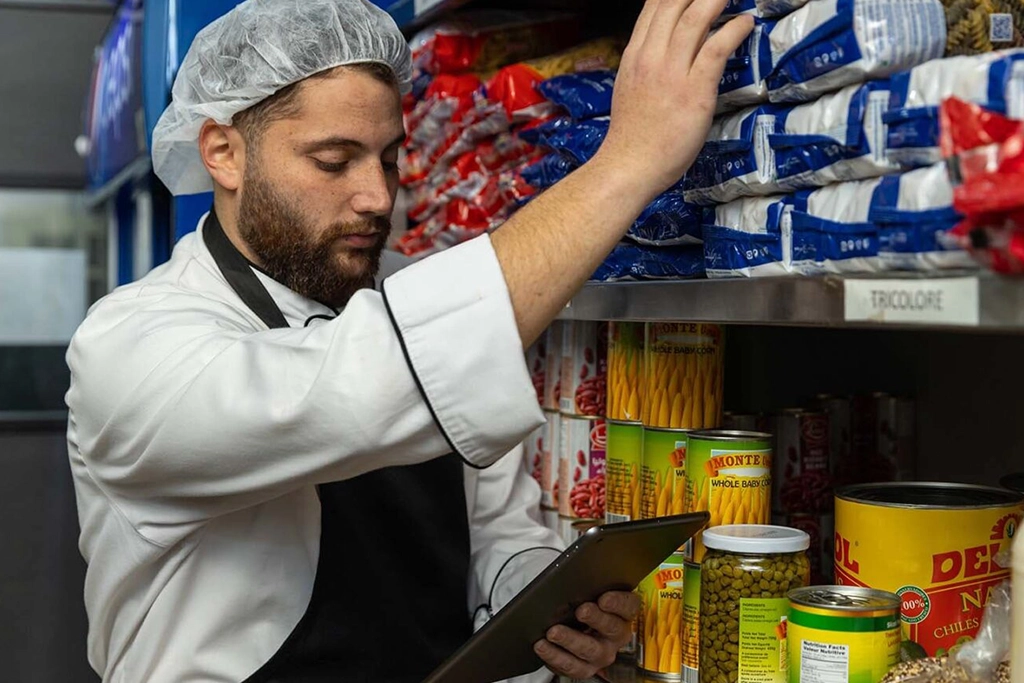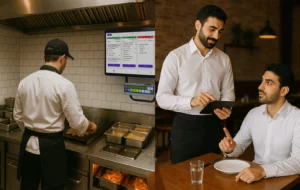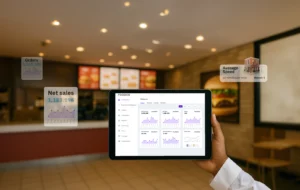The worst that could happen in any restaurant is not having enough ingredients or having too many. That’s why a restaurant inventory management system is the backbone of every restaurant, and without it, catastrophes are bound to happen. But what is restaurant inventory management?
In short, restaurant inventory management is the process of tracking and managing storage to determine how much of each item is still available and to restock promptly to meet demand. Keeping a good track of your inventory will help you stay supplied with key ingredients mid-service and reduce food waste related to overstocking. Moreover, it can help you increase your profit by up to 20% if you’re consistent.
In this article, we’ll go through the types of inventory management, its benefits, and best practices.
Types of Inventory Management
1- The Manual System
Managing a restaurant inventory manually is ideal for startups and small restaurants; it has low implementation costs and is easy to learn. However, it can be time-consuming and more susceptible to errors, which can be costly in the long run. Inaccurate records of your inventory can cause a higher rate of food wastage and poor forecasting and pricing decisions.
What are the manual methods?
Pen and paper method: Using a simple pen and paper to track inventory data shelf-to-sheet. The sheet includes each item and relevant details, like universal product codes (UPCs), suppliers, UOM, costs, and quantities. Also, you must adjust the sheet each time an item is added or removed from the stock.
Card method: Each item group is assigned a card, which lists all the information needed. You keep each card with its item group in the storage area. All you have to do is add or subtract from the quantity listed on the card every time an item is added or removed.
Spreadsheet method: This method uses a computerized version of the pen and paper method. However, it is still manual since you must enter the data yourself. Technologies such as Google Sheets, Numbers, or Excel help keep your data safer and more shareable with employees.
2- The Automated System
While automated systems can have a high initial investment rate, they have proven cost-efficient in the long run.
Why?
First, they help reduce labor costs or reassign employees to revenue-generating tasks.
Second, they provide accurate insights that will help you make better decisions and implement more profitable strategies.
And lastly, they reduce human errors, which can negatively affect profitability.
The automated methods include:
Restaurant inventory management software:
A restaurant inventory software can be independent or implemented in a multi-purpose POS system such as Foodic’s All-In-One POS Solution. It still requires you to enter data manually, but it will do the needed calculations to determine ending inventory and measure performance.
This method stands out because it is pre-programmed with formulas; you don’t have to set them yourself or worry about them getting lost or deleted. Moreover, it provides insights based on built-in reports that save you time and facilitates drawing conclusions.
Spreadsheet formula method: This method uses spreadsheets to collect data and calculate through the formulas that you provide. You don’t have to make the calculations manually which reduces human errors and saves time.
Barcodes method: This method involves attaching a barcode to each item and scanning it using a mobile device. Once scanned, it automatically synchronizes with the inventory management software in real time. Barcodes and QR code count functions are incorporated into many inventory management systems.
Advantages Of Inventory Management Software
Using inventory management software instead of manual systems comes with many perks. It makes inventory management as easy as pie and helps you cut costs, save time, and reduce wastage through the following advantages:
If your inventory management is integrated into a POS system, ingredients used in menu items are automatically removed from inventory.
It prompts you to reorder an item as soon as it becomes low-stock. This feature is customizable; you can choose the level of stock availability an item must reach before getting notified to restock.
It can predict how many days an ingredient will be available by considering how much of that ingredient is used in menu recipes.
The software can help you manage the shelf-life of ingredients more efficiently by defining their preservation periods and usage before getting spoiled.
It automatically calculates the inventory balance.
It generates detailed reports of inventory trends to help you identify popular and unpopular ingredients and dishes and make informed decisions accordingly.
Inventory Management Practices You Need to Know
1- Determining the Cost of Goods Sold (CoGS)
To figure out the CoGS, you need to add the value of your beginning inventory to any purchases within a set period and then subtract the value of your ending inventory. This calculation will help you determine if you need to put some menu items at a higher price or if some ingredients are too expensive. In the latter case, you can negotiate the price with the supplier or substitute the ingredient.
2- Ordering
Whether you choose a manual or automated inventory management system, setting specifications and procedures for ordering is important. A famous method is “Par inventory,” which consists of setting a minimum supply required in-store after each delivery. To calculate your Par level, you must divide the amount of inventory used each week along with safety stock (spillage, waste, big orders) by the number of deliveries in the same period. This method will help you be as precise as possible when ordering to reduce food waste and lower costs.
3- Requisitions
After all the calculations and planning, it is time to use your inventory wisely. Ensuring your staff uses your stock efficiently and diligently is fundamental for your business’s success. Set up a record sheet to be filled by your team each time an item leaves your inventory to enter the kitchen. Make sure it includes the employee’s name, the amount, the use, and the date. This procedure will help you see how your staff is using inventory, prevent thefts, and control the use of ingredients.
In a nutshell, an inventory management system is the make-or-break of a restaurant. A well-thought management plan can go a long way in helping you lower costs and reduce waste and keep your business from falling apart. Whether you choose to do it manually or reap the benefits of advanced inventory management software, it is crucial that you stay consistent and never let a thing go overlooked when it comes to your inventory. Every step counts!


